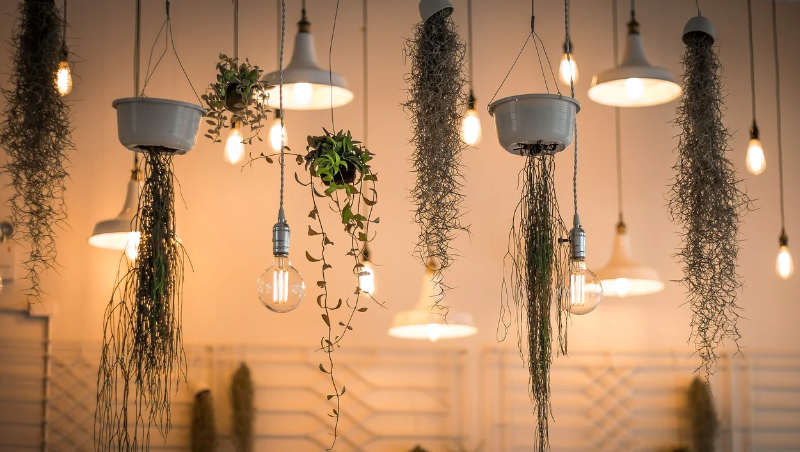Why Energy-Efficient Lighting Matters
In today’s world, energy efficiency is more critical than ever. It not only lessens your carbon footprint but also has the potential to significantly lower your electricity costs. By opting for energy-efficient lighting solutions, you can brighten your home while keeping your energy consumption in check.
Homeowners have diverse ways of adopting energy-efficient lighting solutions. Among these, it can’t be argued that they can never go wrong by getting advice from the experts at Visual Comfort (formerly Circa). Rest assured, doing so would yield positive outcomes.
Types of Energy-Efficient Bulbs
Choosing the right type of energy-efficient bulb is essential for maximizing savings and ensuring the best lighting quality. Here are the most common options:
LED Bulbs
Light Emitting Diode (LED) bulbs are among the most energy-efficient lighting options available. They last up to 25 times longer and consume up to 75% less energy than conventional incandescent lights. LEDs are versatile and available in various styles and color temperatures, making them suitable for any lighting need, from ambient to task lighting.
Compact Fluorescent Lamps (CFLs)
Another energy-efficient choice is Compact Fluorescent Lamps (CFLs), which consume roughly 70% less electricity than incandescent bulbs. Compared to conventional bulbs, CFLs last longer and can take a few seconds to attain maximum brightness. These bulbs are appropriate for a variety of installations and applications because they are available in a range of sizes and forms.
Halogen Incandescents
Halogen incandescent bulbs offer a more energy-efficient alternative to traditional incandescent bulbs. They use about 20% less energy and have a slightly longer lifespan. Although not as efficient as LEDs or CFLs, halogen incandescents provide excellent color rendering and are often used for accent lighting and dimmable fixtures.
Smart Lighting Solutions
Incorporating smart lighting solutions can further enhance energy efficiency and convenience in your home. Here’s how smart lighting can make a difference:
Smart Bulbs
Smart lights offer high degrees of automation and control, particularly those that interface with voice assistants such as Google Assistant or Amazon Alexa. You can set the lights to turn on or off at specific times and with different brightness levels. You can also change the color of the lights to reflect different activities and moods. This automation helps you reduce energy waste and optimize lighting according to your needs.
Smart Switches and Dimmers
Traditional light switches can be replaced with dimmers and smart switches, which let you manage your lighting using voice controls or apps. These devices enable you to fine-tune your lighting levels and create custom scenes for various activities, such as reading, watching TV, or entertaining guests. By adjusting lighting levels, you can save energy and extend the lifespan of your bulbs.
Outdoor Energy-Efficient Lighting
Inappropriate management of outdoor lighting might result in excessive energy consumption. Here are some energy-efficient solutions for your outdoor spaces:
Solar-Powered Lights
Solar-powered lighting is an excellent choice for outdoor environments. They automatically light your yard, walkways, and garden at night by using solar energy that is collected throughout the day. Because they require no wiring, are easy to install, and consume no electricity, solar lights are a cost-effective and ecologically friendly choice.
LED Floodlights and Motion Sensors
LED floodlights provide bright, energy-efficient illumination for driveways, patios, and security purposes. Pairing these lights with motion sensors ensures they only activate when needed, reducing energy consumption and increasing safety. Motion sensors can be adjusted to detect movement within a specific range, providing customized lighting control for your outdoor space.
Energy-Efficient Lighting Tips
Implementing a few basic strategies can help you make the most of your energy-efficient lighting solutions:
Optimize Natural Light
Maximize the use of natural light in your home by keeping windows clean and unobstructed. Use light-colored curtains and blinds that allow sunlight to filter through while maintaining privacy. Mirrors should be positioned carefully to reflect light and make gloomy rooms brighter.
Use Task Lighting
Rather than relying solely on overhead lighting, use task lighting to illuminate specific areas where activities take place. Desk lamps, under-cabinet lights, and reading lights provide focused illumination, reducing the need for higher-wattage bulbs and minimizing energy consumption.
Install Dimmer Switches
You may change the brightness of your lights to fit various activities and moods with the help of dimmer switches. Lowering the brightness level reduces energy consumption and extends the lifespan of your bulbs. Before installing, make sure your lightbulbs are compatible with dimmer switches.
Benefits of Energy-Efficient Lighting
Switching to energy-efficient lighting offers numerous benefits, including:
- Cost Savings: Lower energy use results in long-term savings and cheaper electricity costs.
- Environmental Impact: Reduced energy use helps create a more sustainable future by lowering greenhouse gas emissions.
- Longevity: Energy-efficient bulbs have a longer lifespan, reducing the frequency of replacements and maintenance costs.
- Improved Lighting Quality: Modern energy-efficient bulbs provide excellent color rendering and brightness, enhancing the overall ambiance of your home.
Final Thoughts
Investing in energy-efficient lighting solutions is a smart choice for any homeowner. Through knowledge of energy-saving bulb types, integration of smart lighting systems, and optimal use of natural light, you can design an eco-friendly, well-lit house that saves money and helps the environment.

